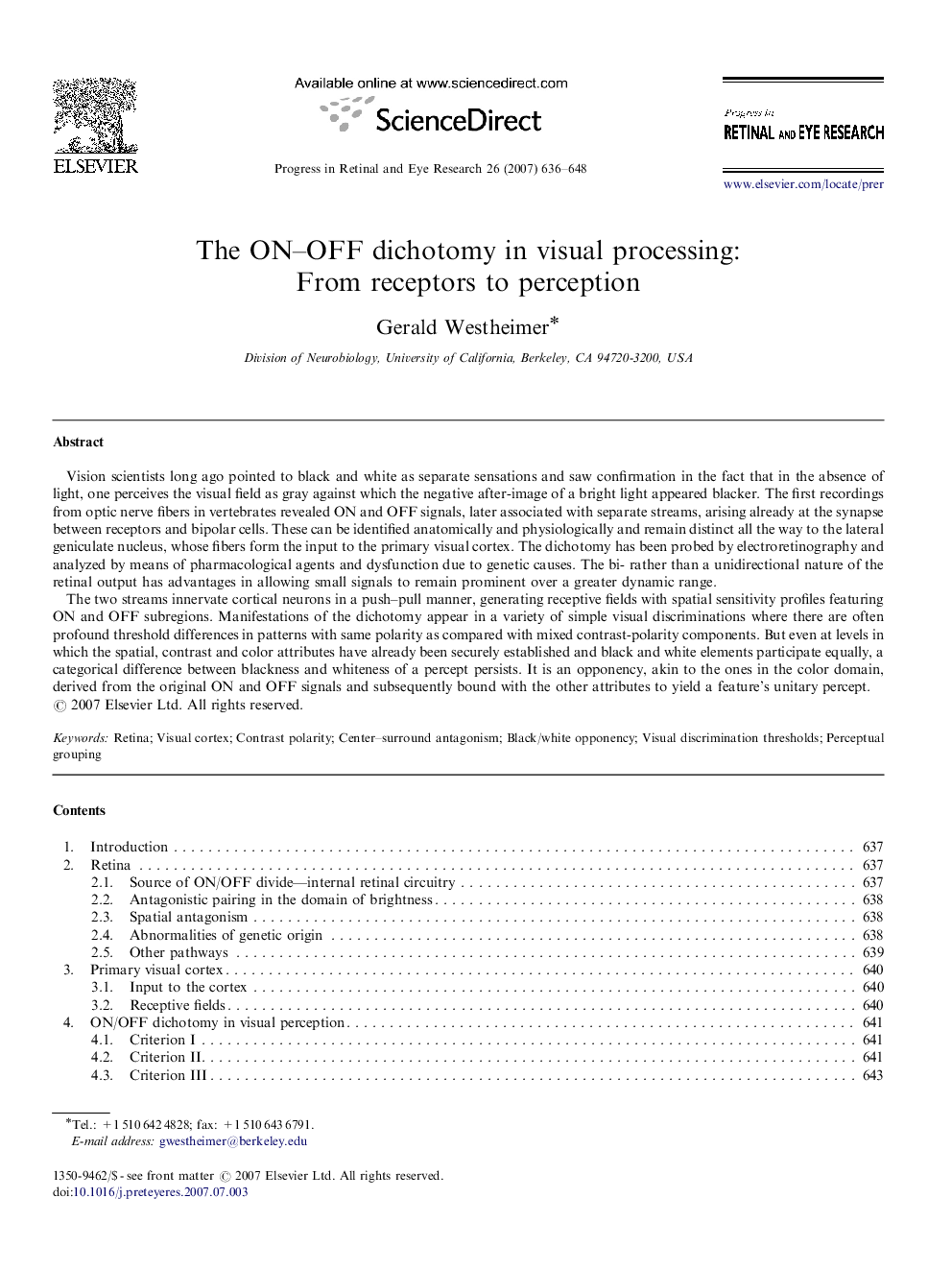| Article ID | Journal | Published Year | Pages | File Type |
|---|---|---|---|---|
| 4032181 | Progress in Retinal and Eye Research | 2007 | 13 Pages |
Vision scientists long ago pointed to black and white as separate sensations and saw confirmation in the fact that in the absence of light, one perceives the visual field as gray against which the negative after-image of a bright light appeared blacker. The first recordings from optic nerve fibers in vertebrates revealed ON and OFF signals, later associated with separate streams, arising already at the synapse between receptors and bipolar cells. These can be identified anatomically and physiologically and remain distinct all the way to the lateral geniculate nucleus, whose fibers form the input to the primary visual cortex. The dichotomy has been probed by electroretinography and analyzed by means of pharmacological agents and dysfunction due to genetic causes. The bi- rather than a unidirectional nature of the retinal output has advantages in allowing small signals to remain prominent over a greater dynamic range.The two streams innervate cortical neurons in a push–pull manner, generating receptive fields with spatial sensitivity profiles featuring ON and OFF subregions. Manifestations of the dichotomy appear in a variety of simple visual discriminations where there are often profound threshold differences in patterns with same polarity as compared with mixed contrast-polarity components. But even at levels in which the spatial, contrast and color attributes have already been securely established and black and white elements participate equally, a categorical difference between blackness and whiteness of a percept persists. It is an opponency, akin to the ones in the color domain, derived from the original ON and OFF signals and subsequently bound with the other attributes to yield a feature's unitary percept.
